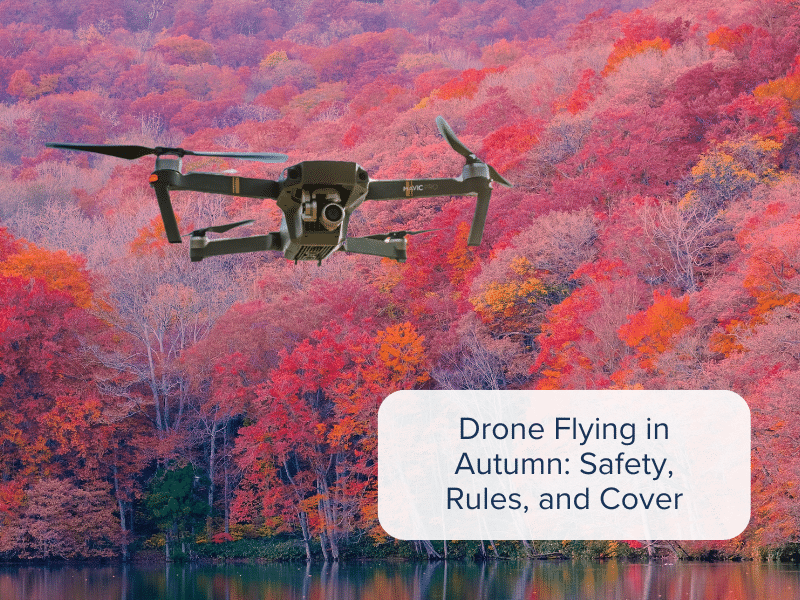
Autumn is a favourite season for many drone pilots. The skies are often crisp and clear, landscapes burst with colour, and the light can be spectacular. But it’s also a season of change – shorter days, unpredictable weather, and cooler temperatures can all affect how, when, and where you fly.
Whether you’re a recreational flyer capturing seasonal beauty or a commercial operator surveying sites before winter, a little extra preparation goes a long way to keeping your flights safe, compliant, and protected.
Weather Watch – Autumn Hazards
Across many regions, autumn weather is unpredictable. A calm, sunny morning can quickly turn into gusty, wet, or foggy conditions. Shorter daylight hours also mean less time to complete flights.
Wind can be a particular challenge, affecting stability, draining batteries faster, and making precise control harder. Moisture from mist, light rain, or wet ground can damage electronics, and low light can make it harder to keep your drone in visual line of sight (VLOS).
Equipment Care in Cooler Conditions
Cooler air can reduce battery performance, which shortens flight times. Keep batteries at room temperature before use and avoid flying them down to the limit – try to land with at least 20–30% charge remaining.
Moisture can also be an issue. Fallen leaves, damp grass, or muddy landing zones can all introduce dirt or water into your drone. A foldable landing pad can help protect your drone, and a quick wipe-down after each flight will keep it in top condition.
Staying Compliant in All Conditions
No matter the season, pilots must follow local regulations, and autumn can make some rules trickier to meet. Maintaining VLOS (Visual Line of Sight) is harder in lower light or fog, and in some regions, flying at night without specific permissions isn’t allowed (please check with your local aviation authority).
Commercial operators should update their risk assessments to account for seasonal factors, from stronger winds to slippery take-off points. Recreational flyers can also benefit from a quick pre-flight checklist to spot any hazards before take-off.
Drone Insurance Considerations for Autumn
Changing conditions can mean changing risks. Stronger winds can cause collisions, while reduced visibility increases the chance of losing control. Autumn is also a busy period for many commercial operators completing pre-winter inspections – more flying means greater exposure.
A comprehensive drone insurance policy can give you peace of mind. Coverdrone’s recreational and commercial policies can be set up to include protection for accidental damage, third-party liability, worldwide cover (with some restrictions) or equipment hire, so you can keep flying even if something unexpected happens.
Autumn Flying Best Practices
Here’s a quick seasonal checklist to help you fly confidently this autumn:
- Plan ahead: Check weather, daylight hours, and local restrictions.
- Protect your kit: Keep batteries warm, use a landing pad, and dry equipment after use.
- Stay visible: Maintain VLOS and fit lights where regulations allow in low light.
- Factor in seasonal hazards: Wet ground, falling leaves, and gusty winds.
- Review your insurance: Make sure your policy matches your flying activity.
With the right preparation, autumn can be one of the most rewarding seasons for drone flying. By planning carefully, staying compliant, and keeping your insurance up to date, you can enjoy every crisp morning and golden-hour flight with confidence.
Thinking about your next flight?
Make sure your cover is ready for the season – get a quote with Coverdrone today and fly smart this autumn, knowing you’re protected.
